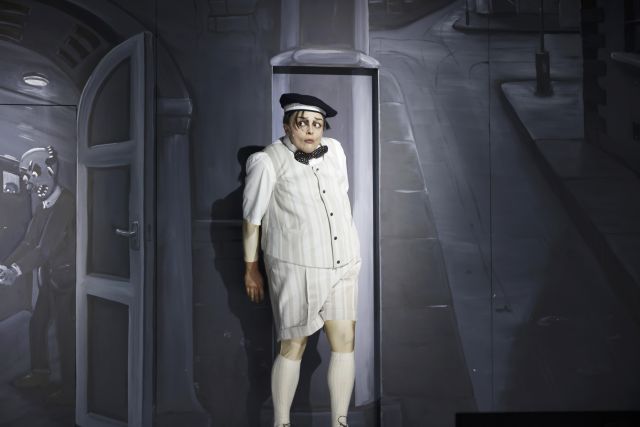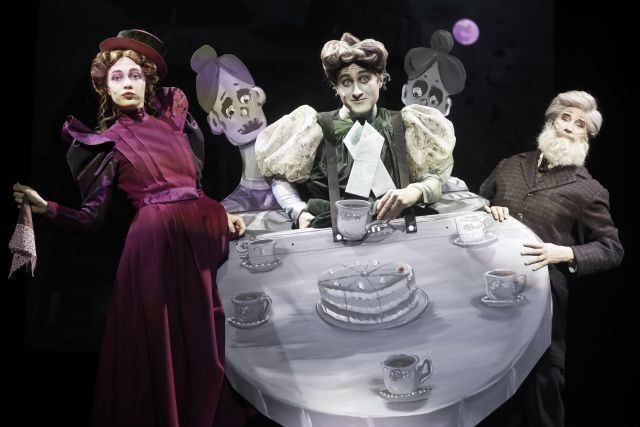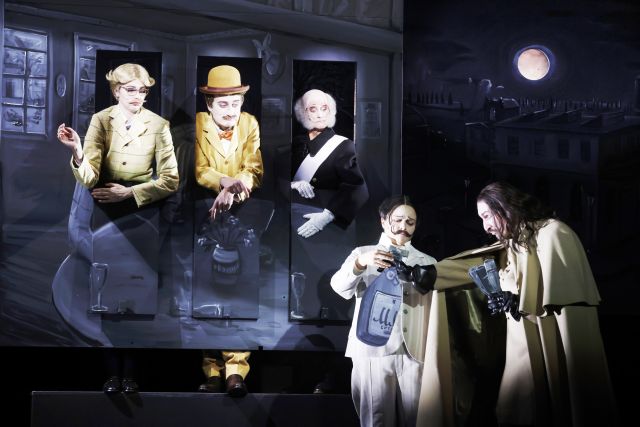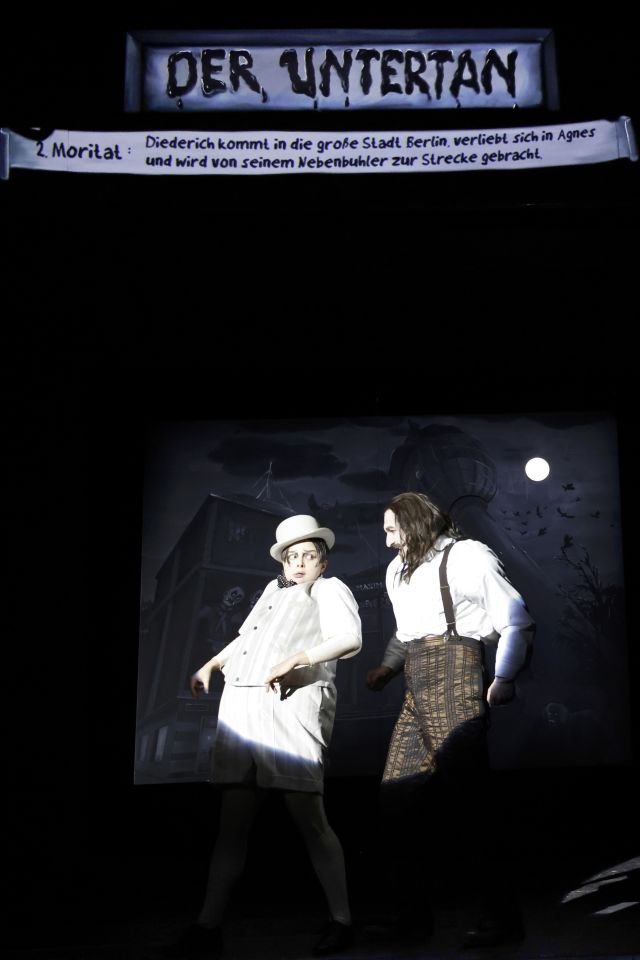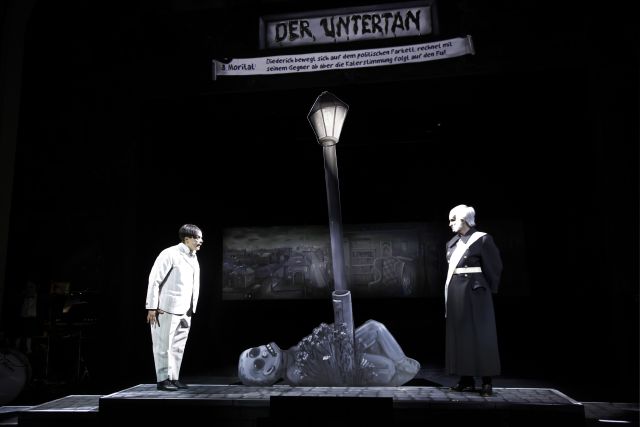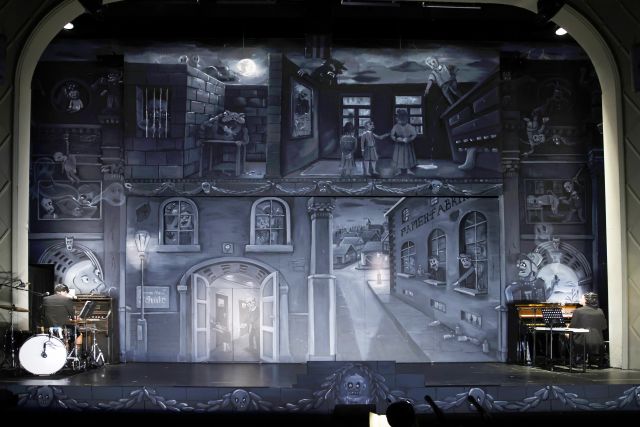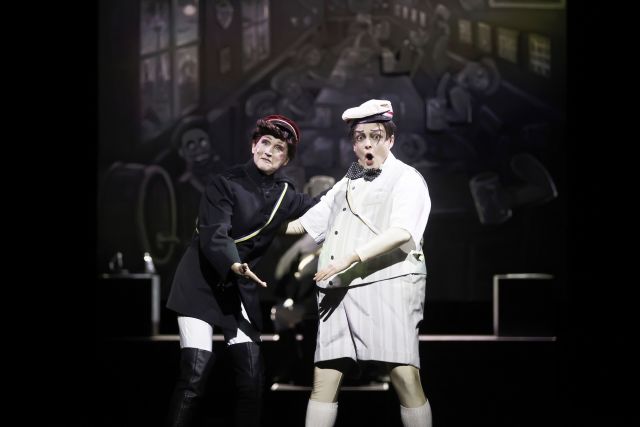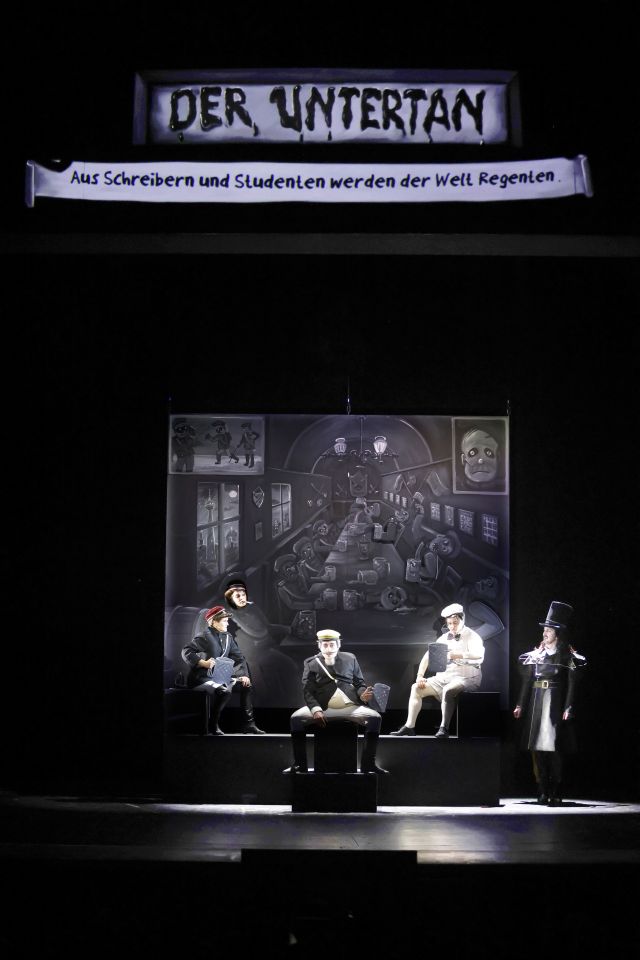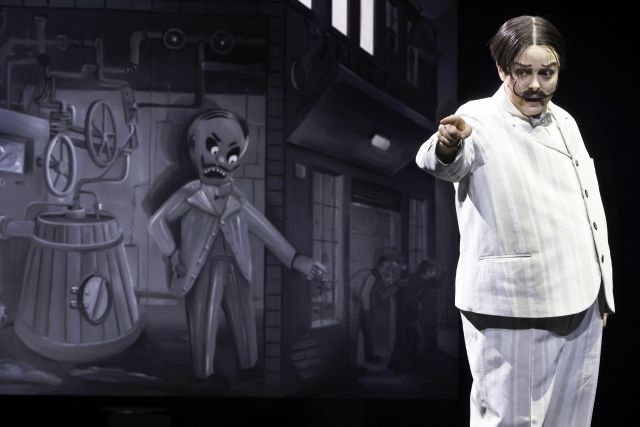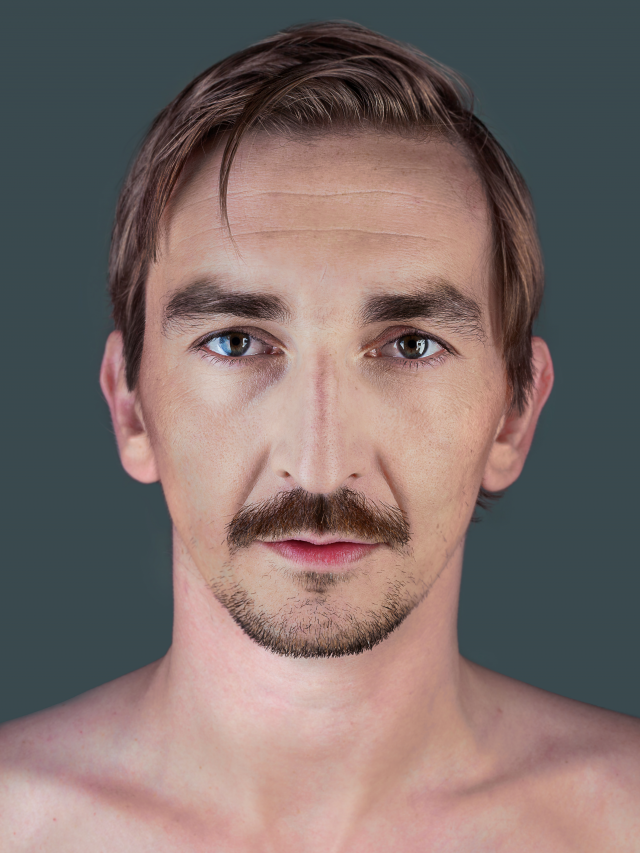Skip to main content
Der Untertan
The Berlin City Palace has risen! After it was almost completely destroyed during an air raid in 1945, the GDR leadership demolished it in 1950 as a »relic of the monarchy«, and then built the Palace ...
The Berlin City Palace has risen! After it was almost completely destroyed during an air raid in 1945, the GDR leadership demolished it in 1950 as a »relic of the monarchy«, and then built the Palace of the Republic on the same site. Now it’s back again. The »memoriamania« that ran throughout the time of the German kaisers and spared nothing, no town, no square, no city - everyone wanted to have a kaiser memorial - has thus reached its culmination in the present.
When William II ascended to the throne, he chose the city palace as his residence in 1888. His biggest and most loyal follower? Besides today's private backers from the extreme right, Diederich Heßling, the protagonist of Heinrich Mann's novel Der Untertan. Published in 1918, the novel has a long history of adaptation and reception (and translation, as The Patrioteer, Little Superman, Man of Straw and The Loyal Subject). Not only was its publication halted on the eve of World War I, it was also on the list of books burned by the Nazis in 1933 on what is now Berlin's Bebelplatz. Then Wolfgang Staudte's 1951 DEFA adaptation »had to contend with West German censorship in the rough winds of the Cold War« as well. If the novel is explicitly a history of the mentality of the German Empire, a »history of the public soul under William II«, the film's intentions went even further. After the end of World War II, Staudte was still interested in Diederich Heßling, who was loyal to the Kaiser, but he was even more interested in the psychological origins of fascism. In Heinrich Mann's novel, the character of the actor serves as an overarching metaphor of the time. »And as neither master nor subject exists, either in law or in fact, public life takes on an air of wretched comedy.« In addition to referring to the constructed level of power that the emperor was known for projecting, Heinrich Mann also takes a critical look at his own role as an artist, as a »wise man and a fool«, one who »knows but, at the same time, is too weak to use his knowledge to better society.« A cold wind blows across the Theaterplatz in Netzig, as Diederich Heßling and his wife attend a Wagner opera.
Director Christian Weise, intimately acquainted with the theatre’s deception and its comedic possibilities, stages Der Untertan as a ballad, as the sung story of a balladeer and his troupe who used to perform on the streets, squares and fairs. Since the 1930s, this form has fallen into obscurity – let’s bring it back: with a range of works on canvas by Julia Oschatz (2020 set designer of the year), musician Jens Dohle and Gorki actors Via Jikeli, Marta Kizyma, Catherine Stoyan, Till Freudensprung and Till Wonka!
Watch the Trailer
Premiere 15/December 2023
Photo: Esra Rotthoff
Directed by
Christian Weise


